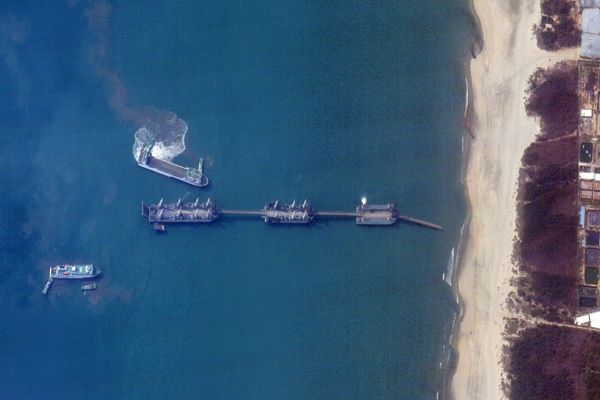
Huge blooms of phytoplankton — microscopic algae floating on the ocean's surface — have become larger and more frequent along the world's coastlines, according to new research, bringing benefits to fisheries but also potentially causing harm.
Between 2003 and 2020, coastal phytoplankton blooms increased by about 13% in extent, covering an additional 4 million square kilometers of the global ocean, the Nature study found. And the blooms occurred more often, up by 59% during that period.
While marine animals such as fish and whales eat phytoplankton, it can also prove toxic in large amounts, starving the ocean of oxygen and leading to "dead zones" that wreak chaos on the food chain and fisheries. A 2016 algal bloom near Chile, for example, cost salmon farms $800 million.
"Phytoplankton blooms can be really beneficial," said study co-author Don Anderson who leads the US National Office for Harmful Algal Blooms at Woods Hole Oceanographic Institution. "Many of the really productive fisheries in the world's ocean are driven by blooms. It's important to understand why they might be changing."
Scientists used satellite observations to look for blooms, programming a system to pick up the color of the algae. However, they weren't able to distinguish between benign and harmful blooms.
While some regions saw weaker blooms over the past two decades, including the California Current, blooms strengthened in the northern Gulf of Mexico and the East and South China Seas.
What's driving the increase in phytoplankton blooms varies by region, scientists said. In some cases, warmer sea surface temperatures appear to be behind the boom. Changes in climate can also mess with ocean circulation, affecting mixing between ocean layers and how nutrients move around the ocean.
Human development also plays a role. Fertilizer runoff from agriculture can spike nutrient loads in the ocean, leading to blooms. Researchers also found that more aquaculutre around places like Finland, China, and Vietnam might be associated with more algal blooms.
Outside of fertilizer use and aquaculutre, "I would also be interested in relationships between population increases along coastal areas and bloom increase," said Nandita Basu, a Canada Research Chair in Global Water Sustainability and Ecohydrology not affiliated with the study.
"This would be especially relevant for some countries in the southern hemisphere where a major part of the domestic waste is not treated."







